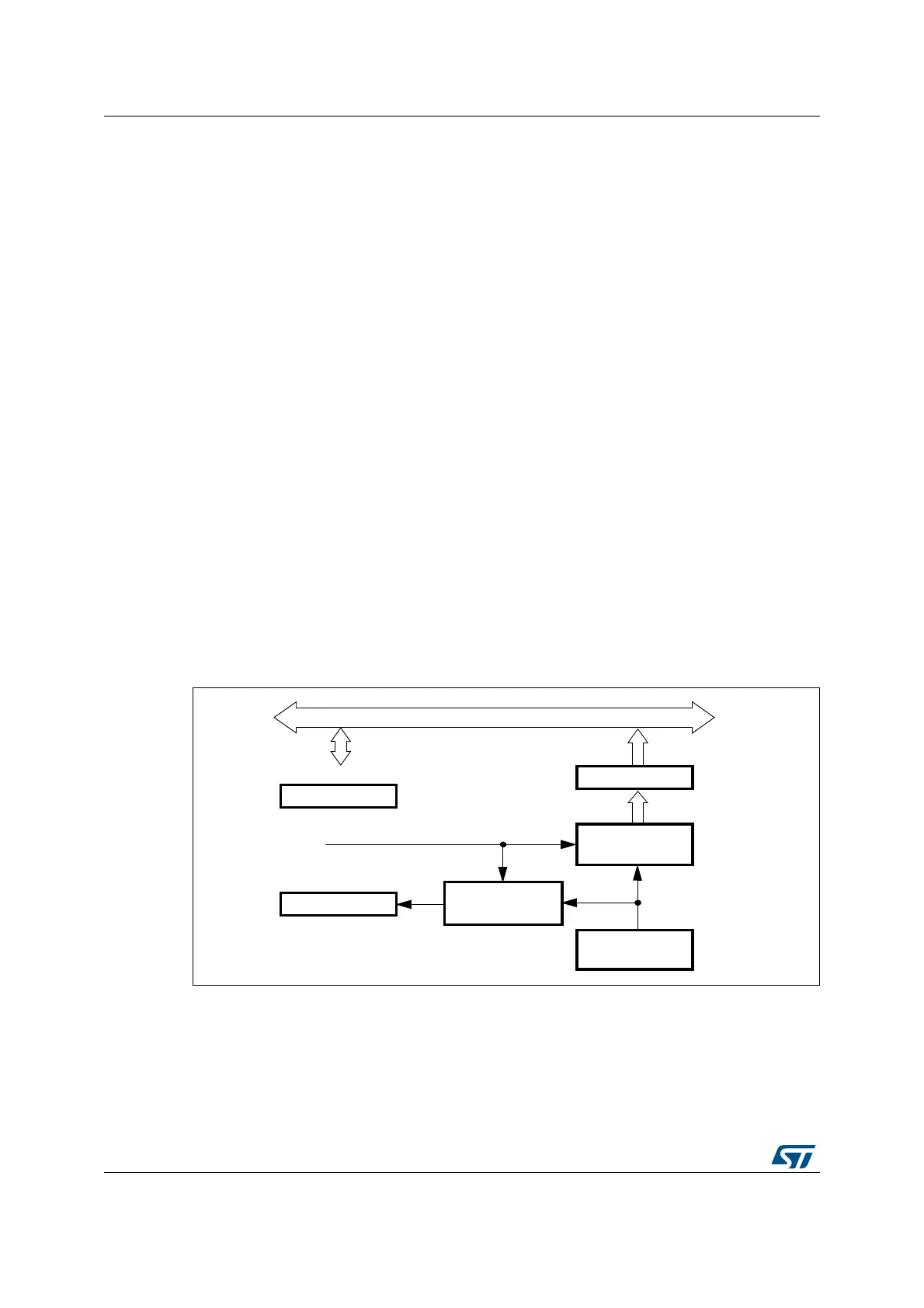Random number generator (RNG) RM0033
544/1381 RM0033 Rev 9
20 Random number generator (RNG)
This section applies to the whole STM32F20x and STM32F21x family, unless otherwise
specified.
20.1 RNG introduction
The RNG processor is a random number generator, based on a continuous analog noise,
that provides a random 32-bit value to the host when read.
The RNG passed the FIPS PUB 140-2 (2001 October 10) tests with a success ratio of 99%.
20.2 RNG main features
• It delivers 32-bit random numbers, produced by an analog generator
• 40 periods of the RNG_CLK clock signal between two consecutive random numbers
• Monitoring of the RNG entropy to flag abnormal behavior (generation of stable values,
or of a stable sequence of values)
• It can be disabled to reduce power consumption
20.3 RNG functional description
Figure 210 shows the RNG block diagram.
Figure 210. Block diagram
1. For more details about RNG Clock (RNG_CLK) source, please refer to Section 5: Reset and clock control
(RCC).
The random number generator implements an analog circuit. This circuit generates seeds
that feed a linear feedback shift register (RNG_LFSR) in order to produce 32-bit random
numbers.
32-bit AHB bus
RNG_DR
RNG
_CR
RNG
_SR
Status register
Control register
fault detector
LFSR
Analog seed
RNG_CLK
Clock checker &
data register
Shift Register
feed a Linear Feedback
ai16080

